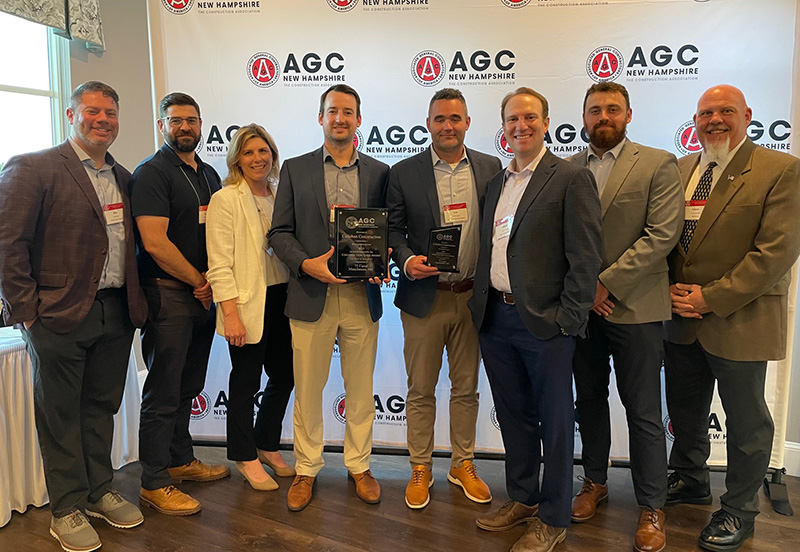News: Construction Design & Engineering
Posted: August 15, 2013
The overlooked tax credit: Historic Rehab Credits
It may seem like a challenging time to invest in commercial property in the Boston area, given that the city's commercial real estate market is now one of the hottest - and most expensive - in the country. But there are some great deals left, especially if developers look for opportunities in the outer suburbs and are willing to consider an often overlooked method of creative financing.
Take Advantage of a Valuable Financing Option
The government offers special tax credits for those who restore historic commercial properties. These lucrative credits, called Historic Rehabilitation Credits, can be used either by developers or sold by developers to other companies, generating enough money to help finance expensive real estate transactions.
These tax credits can literally make or break real estate deals, since they can provide developers and building owners 10% to 20% (or more) of the overall renovation costs. Banks typically will loan developers only 75% of the money necessary for such rehabilitation projects, leaving investors to search for alternative ways to finance the remainder of their ventures. Rehabilitation tax credits are often overlooked because they can't be used unless the property meets statutorily defined criteria. In addition, developers may not realize if they can't take advantage of the credits themselves, they can often transfer them to other companies in exchange for cash.
Most real estate developers don't generate nearly enough taxable income to use these tax credits. But larger corporations, such as insurance companies, are often eager to acquire the credits at a discounted market rate.
The federal government lets developers take advantage of these credits, if they are substantially rehabilitating properties built before 1936. The rehabilitated buildings must be used for commercial purposes, so people can't simply get credits to renovate their own homes. Investors can, however, use such credits to turn old buildings into shops, offices or apartment complexes. To avoid having the credit recaptured by the government, developers must hold onto the properties for at least five years, and only costs to renovate, not expand, the property are eligible.
A Resource for Cities in Need of Revitalization
The tax credits serve an important government interest: to convince developers to invest in rundown areas and revitalize decaying neighborhoods.
Indeed, older mill cities such as Lowell, Lawrence and Fall River have benefitted tremendously from the government subsidy. Some neighborhoods in these cities used to be eyesores, filled with abandoned or underutilized textile mills. But real estate developments there, partially funded by these tax credits, have restored some areas into vibrant communities.
In one case, an old textile mill on the canal that used to be half-empty now has artists' lofts as well as studios. Developers spent $7 million refurbishing the decrepit building, which was originally worth only $2 million. The project generated a tax credit of over $1 million.
The rehabilitation tax credit may be available on both federal as well as state tax returns. There are two types of federal credits: a 10% credit, which can be received by developers who rehabilitate any qualifying commercial property built before 1936, and a 20% credit for those who renovate buildings that are eligible to be on the National Register of Historic Places. The National Park Service decides which buildings can be on the national register. The Mass. credit depends, in part, on how much money the state has allocated to the subsidy program.
Determine Feasibility Before Moving Ahead
A holistic approach is best to help developers decide whether to pursue any specific project, considering not just the tax ramifications but whether a specific development can generate profits over the long term.
A cost certification audit report can provide assurance to a credit investor that they will realize the credits they are investing in. Agreeing to have the costs audited can be key in selling tax credits to third parties, as the audit gives potential investors a level of comfort they need to participate in a deal.
After all, tax credits are only part of an overall feasibility analysis to see if a project makes sense. You can't let the tax tail wag the project dog, but appropriate use of these credits might make the difference between a project going forward or not. There are complex tax rules surrounding the generation, use or transfer of historic rehabilitation credits, and it is important that an owner or developer consult their tax advisor before making a decision to take advantage of these credits.
William Jenczyk, CPA is a principal in the real estate group at DiCicco, Gulman & Co. in Woburn, Mass.
MORE FROM Construction Design & Engineering
Nobis Group awards Robinson and Moreira STEM scholarships
Concord, NH Nobis Group, a 100% employee-owned consulting firm specializing in engineering and environmental solutions across the Northeast, has named the recipients of its 2025 STEM Scholarship: Andie Moreira of
Columns and Thought Leadership

The rise of incubators and co-working spaces: The latest in life sciences - by Matt Combs
In recent years, the life science industry has witnessed a shift in how companies operate and innovate. One of the key driving forces behind this transformation is the emergence of incubators and co-working spaces specifically tailored to meet the unique budget and schedule needs of startups.

Ask the Electrician: Is summer a prime time for commercial electrical maintenance?
The answer is “Yes!” While January marks the official new year, many businesses view September as a fresh start. This makes summer an ideal time for commercial property owners to schedule long-term electrical maintenance projects.

The design-build advantage: Integrated interior design solutions - by Parker Snyder
When it comes to corporate interior spaces for both commercial and industrial projects, partnering with a design-build firm with in-house interior design services can offer clients many benefits. Unlike traditional delivery methods where interior designers operate independently from the design and construction teams, often creating a longer project timeline as cost negotiations and revisions ensue

Careers in Construction Month focus on training and safety - by Joe Camilo
October is Careers in Construction Month, and rarely has it been more consequential. According to our chapter’s national parent organization, the construction industry needs to attract half-a-million new workers in the coming year to meet demand. Addressing that need is a huge job, but we at ABC MA are trying to do our part.








